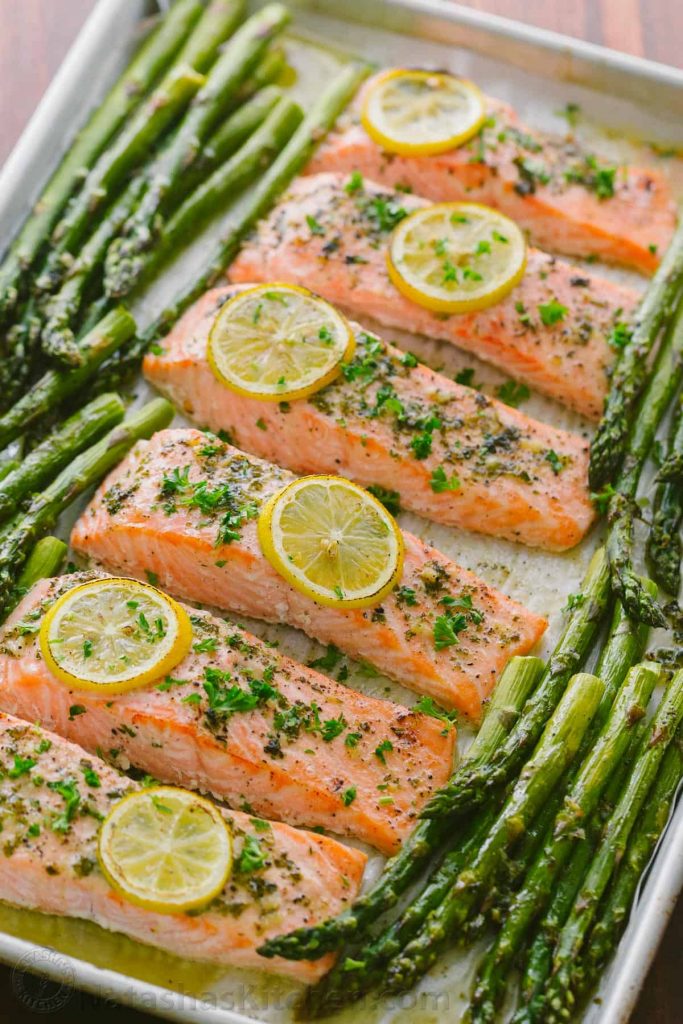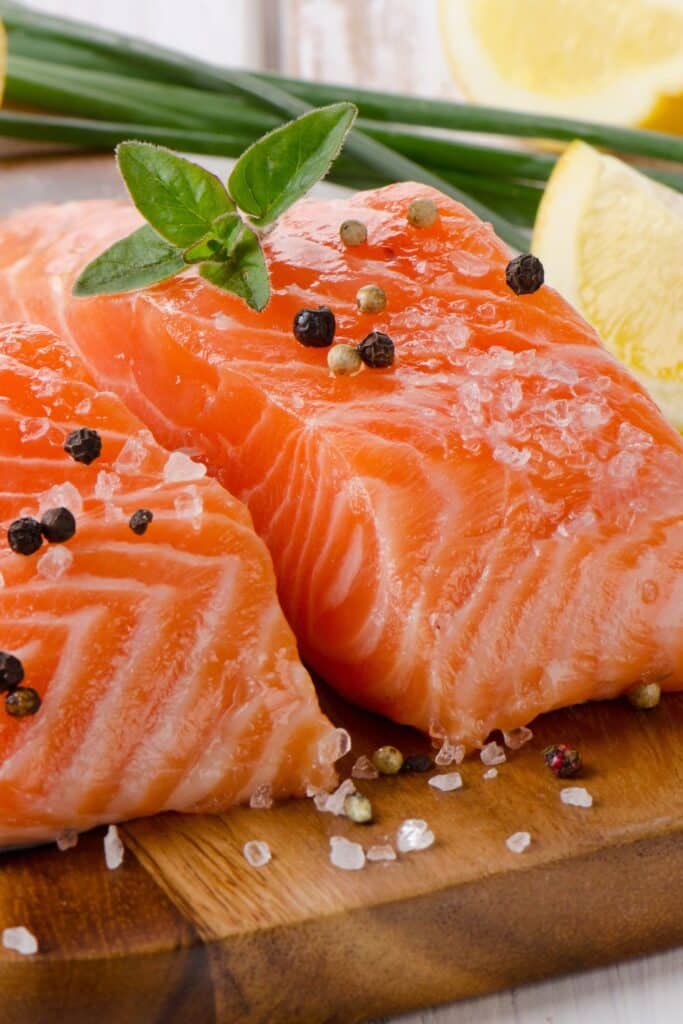Salmon is a delectable and healthy seafood option, boasting omega-3 fatty acids, potassium, selenium and protein as well as being an excellent source of vitamin D.
Baking salmon is an easy and fast way to create delicious meals. In this article we’ll cover how long to bake at 425 and give helpful hints and tips so you get perfect results every time!
Cooking time
Salmon is an exquisite and healthy fish to add to any meal, providing protein and omega-3 fatty acids essential for heart health, while its delicate yet light taste complements many seasonings and preparation techniques. Baking salmon for a weeknight dinner is one of the easiest and healthiest methods, evenly cooking each piece without drying it out during baking. Preheat the oven to 425 degrees F, line a baking sheet with aluminum foil, spray with cooking spray before placing salmon fillets onto it and season as desired before placing back into the oven until done – or until cooked completely!
Baking time for salmon depends on its thickness and fillet type; thinner fillets will typically bake quicker than thicker ones, and wild-caught varieties often have thinner flesh than those raised in farms. On average, however, 1-inch-thick salmon fillets should take 12-15 minutes at 425 degrees; but always check before serving!
An important consideration when purchasing salmon is marinade or not. Marinades add flavor and may speed up the cooking process; however, too much fat reduction in a marinade could diminish nutritional value of the fish.
Before baking fish, be sure to completely thaw and rinse to eliminate excess moisture. Additionally, it may help to rub the fillets with oil or butter to keep them moist while preventing sticking to your baking sheet or pan.
When baking salmon, using a food thermometer is ideal to ensure it reaches 145 degrees F before consumption is safe. These thermometers are easily available at most grocery stores; alternatively, you can still tell when the salmon is ready by pressing gently with your finger against its flesh – opaque and flaky flesh should easily pierced by the tip of a fork.
Temperature
Salmon is an extremely delicious and healthy fish, packed with omega-3 fatty acids and essential vitamins and minerals. It provides an excellent source of protein and fiber. Baking salmon is an effective, relatively low-fat cooking method which preserves its natural oils while still creating delicious results; moreover, baking provides an effortless and fast method of preparation.
No matter if it’s for a quick weeknight dinner idea or impressing guests at a dinner party, baked salmon makes for an easy yet elegant solution. Pair it with side dishes such as roasted vegetables or grain salad; even pair it with light pasta dishes for maximum impact!
When selecting salmon for consumption, wild-caught species should always be prioritized over farm-raised ones. Wild-caught fish is typically more flavorful and higher in nutritional content compared to farmed varieties; furthermore they tend to be cheaper and more readily available.
To ensure that your salmon is cooked through, using a food thermometer is key. This will allow you to ensure it reaches 145 degrees Fahrenheit without overcooking. Baking also plays an integral part in this process – for optimal results it should take around 12-18 minutes per portion.
Overcooking salmon can result in dry and tough texture, making it less appealing and potentially unhealthy to consume. To prevent this from happening, it is recommended that before serving it you check its internal temperature with a food thermometer to avoid this happening.
Salmon is consumed on average each day in amounts of three ounces (85 grams). Each serving provides protein, vitamin B6/niacin/iron/magnesium/potassium/zinc as well as omega-3 fatty acids which have been shown to lower cardiovascular risks and blood pressure.
For optimal salmon preparation, it is crucial to use either a nonstick pan or line the pan with aluminum foil, to prevent it from sticking or releasing grease into the oven. Furthermore, seasoning the salmon before baking with such ingredients as salt, pepper, garlic cloves and rosemary – either directly layered onto it before cooking or added into marinades can add delicious flavors that enhance any recipe!

Thickness
Baked salmon is an easy and healthy alternative to fried fish dishes, and can be prepared in numerous ways. To achieve perfect baked salmon results, the key lies in paying close attention to fillet thickness, oven temperature and seasonings used; also considering wild or farm-raised options as well as whether you need whole fillets or individual ones; cooking time may differ accordingly.
Baking salmon at 425 degrees Fahrenheit will produce a crispy golden crust and tender interior, as well as maintaining its nutritional value, since salmon is rich in protein and Omega-3 fatty acids. In addition, Vitamin B12 found in salmon can help build blood cells while also decreasing inflammation while strengthening bones and decreasing risk for chronic diseases.
To ensure that your salmon is thoroughly cooked, using a meat thermometer to check its internal temperature is key to its success. The minimum internal temperature for salmon should be at 145 degrees Fahrenheit; baking time depends upon thickness of fillet and desired doneness level.
General guidelines suggest you bake salmon for 10 minutes per inch of thickness; however, all ovens vary and you may require longer cooking if yours is particularly thick. Furthermore, it’s a good idea to allow it to rest after taking it out of the oven – this will allow its juices to redistribute more evenly and make your salmon more tender!
An additional way to enhance the flavor of baked salmon is marinating it with sauces or seasoning it with herbs and spices before baking it, which will add depth of flavor while making it more appealing for both children and adults. You could even add lemon slices as extra sweetness!
Another tip for baking salmon successfully is covering it with foil when placing it into the oven. This will keep it moist while also simplifying its cleanup. However, keep in mind that foil will prevent browning of its crust while also limiting crispiness – if you prefer crispier crusts leave your fish uncovered during its baking.
Seasonings
Salmon is a delicious and nutritous fish that can be prepared in numerous ways. Rich in omega-3 fatty acids and protein, salmon makes for an easy weeknight dinner option when baked at high temperature in foil packaging – offering great versatility! Baked salmon has an irresistibly crispy texture when prepared at this temperature; perfect with vegetables.
Seasoning salmon is an easy and delicious way to add flavor. Salt and pepper work great as a base, or herbs like parsley and basil add additional dimension. Add spices like crushed red pepper or oregano if desired and even use homemade spice blends so you can control both salt content and heat levels within them.
At 425 degrees, baking salmon takes roughly 10 minutes per inch of thickness. You can check whether it is done by poking it with a fork or inserting a meat thermometer into its thickest part; its internal temperature should reach an internal temperature of at least 145 degrees Fahrenheit.
Food thermometers should always be used when baking salmon as it can be hard to determine when it has reached an ideal state of cooking. A well-cooked piece should have a crispy outer layer with moist flaky interior texture; overcooking will lead to dry, tough meat.
Baking salmon at 425 degrees is an ideal method for producing succulent and flavorful salmon, producing both an irresistibly crispy crust and moist interior. Plus, baking it reduces oil consumption significantly while giving its outer edges an irresistibly sear for even cooking!

